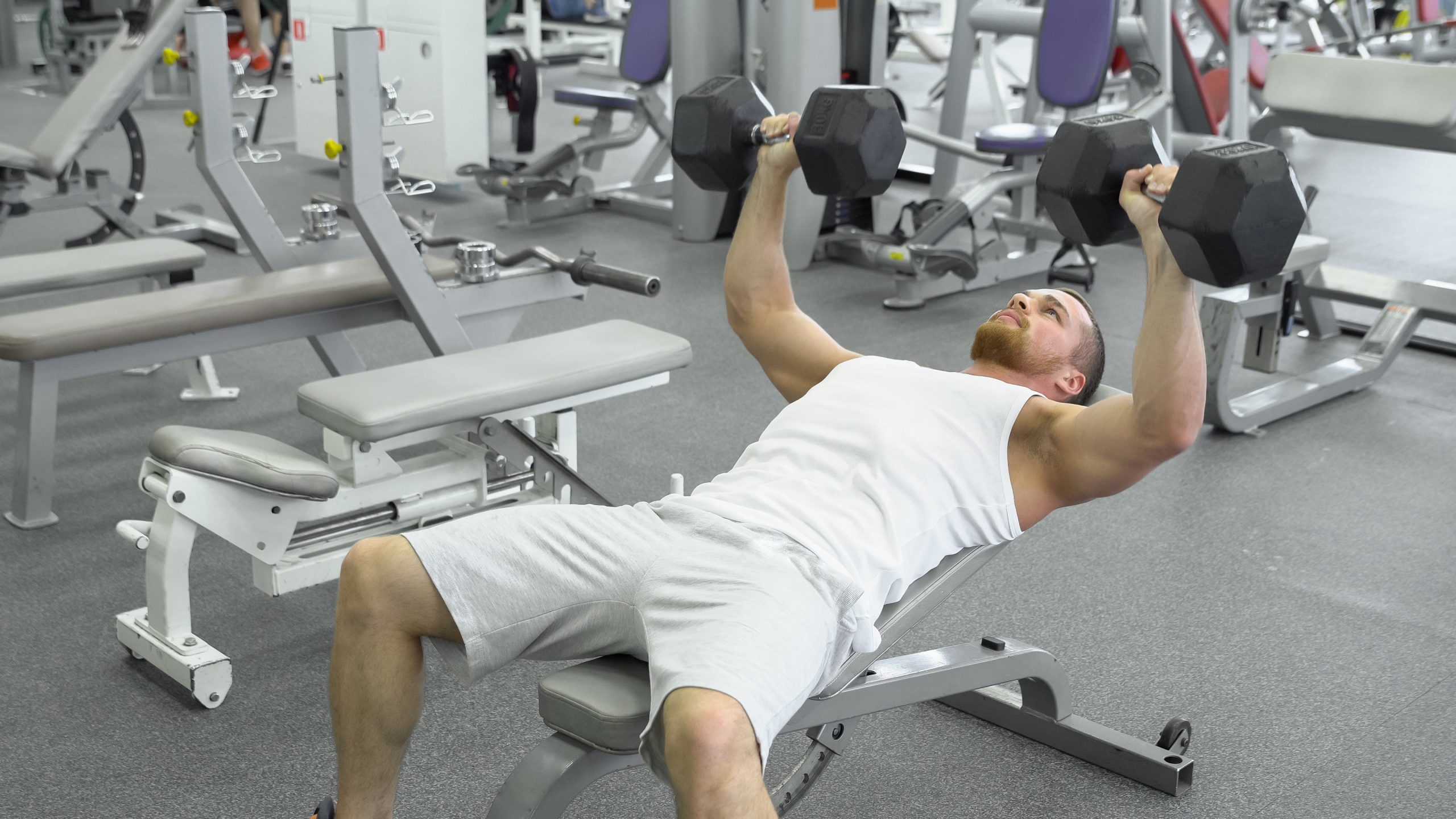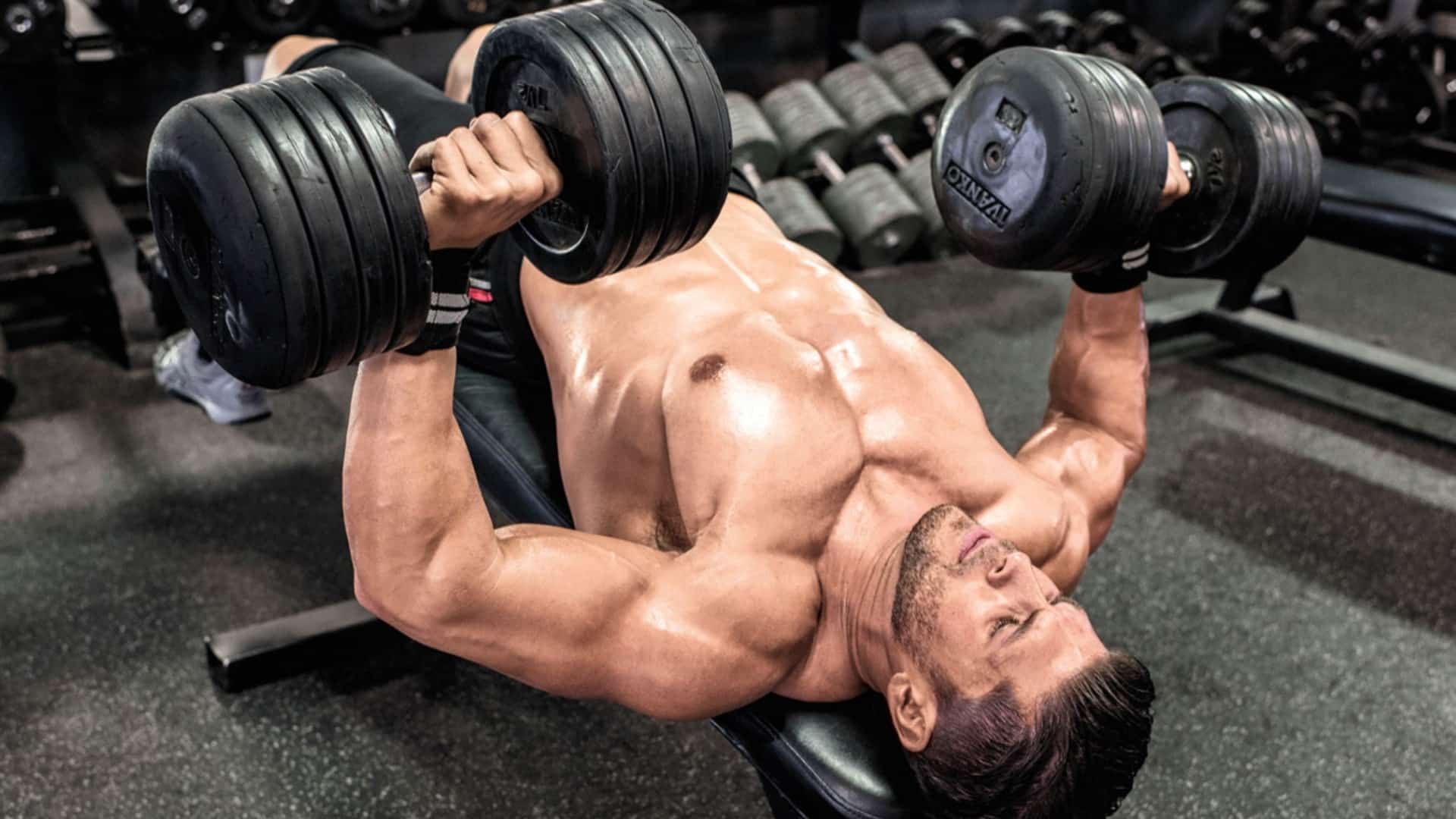Ultimate Guide To Dumbbell Chest Exercises For Strength And Muscle Growth
Building a strong, sculpted chest is a cornerstone of any well-rounded fitness routine, and dumbbell chest exercises are some of the most versatile and effective ways to achieve it. Whether you’re a beginner looking to enhance your upper body strength or an experienced lifter aiming to break through plateaus, incorporating dumbbells into your chest workout can deliver significant results. Dumbbells offer a unique range of motion and versatility that machines and barbells simply can't match, giving you the tools to target your chest muscles from multiple angles.
Chest training with dumbbells isn't just about aesthetics; it's about improving functional strength, posture, and overall health. Many people underestimate the importance of a strong chest, but the benefits extend far beyond the gym. It aids in daily activities like pushing, pulling, and lifting, while also reducing the risk of injury. Additionally, dumbbells allow for unilateral training, which helps fix muscle imbalances and improve symmetry—key for both performance and appearance.
This guide will walk you through everything you need to know about dumbbell chest exercises, from proper technique and muscle activation to workout routines tailored for beginners, intermediates, and advanced athletes. By the end of this article, you'll have a complete roadmap to building a powerful chest, all while avoiding common pitfalls and maximizing your gains. So, grab your dumbbells, and let’s get started on your chest transformation journey!
- Gardner School A Beacon Of Excellence In Early Childhood Education
- Mimosa Franklin A Detailed Insight Into Her Life And Contributions
Table of Contents
- Why Focus on Dumbbell Chest Exercises?
- Anatomy of the Chest Muscles
- How Do Dumbbells Benefit Chest Training?
- What Are the Best Dumbbell Chest Exercises?
- Flat Dumbbell Bench Press
- Incline Dumbbell Bench Press
- Decline Dumbbell Bench Press
- Dumbbell Fly
- How to Progress in Dumbbell Chest Workouts?
- Common Mistakes and How to Avoid Them
- Dumbbell Chest Workout for Beginners
- Dumbbell Chest Workout for Intermediates
- Advanced Dumbbell Chest Workout
- Frequently Asked Questions
- Conclusion
Why Focus on Dumbbell Chest Exercises?
Dumbbell chest exercises provide a unique advantage over other forms of chest training. By giving you a greater range of motion and more freedom to adjust angles, these exercises help you target your chest muscles more effectively. But why exactly should you prioritize dumbbells in your chest workouts?
1. Versatility in Movements
Dumbbells allow you to perform a wide range of exercises, from presses to flyes, targeting different areas of the chest. This versatility ensures balanced development across the pectoral muscles.
2. Unilateral Strength Development
One of the standout benefits of dumbbells is their ability to address muscle imbalances. Training with dumbbells requires each side of your body to work independently, which can help correct asymmetries and improve overall strength.
- The Rise Of Lady Gamecocks A Deep Dive Into Their Journey To Excellence
- Luxury And Comfort Redefined The Westin Dc Experience
3. Improved Range of Motion
Unlike barbells, which can limit your movement, dumbbells allow for a deeper range of motion. This extended range translates to better muscle activation and enhanced growth potential.
4. Safer for Home Workouts
For those training at home, dumbbells are a safer option compared to a barbell setup. They’re easier to handle, and you can safely drop them if needed without risking injury or damage.
Anatomy of the Chest Muscles
Before diving into exercises, it’s crucial to understand the anatomy of the chest. Knowing which muscles you’re targeting will help you perform each movement with proper form and maximize effectiveness.
Main Chest Muscles
The chest is primarily composed of two muscles:
- Pectoralis Major: The larger, fan-shaped muscle that makes up the bulk of the chest. It has two main sections—upper (clavicular head) and lower (sternal head).
- Pectoralis Minor: A smaller, triangular muscle located underneath the pectoralis major. It stabilizes the shoulder blades and assists in chest movements.
Supporting Muscles
In addition to the chest muscles, several other muscles are activated during dumbbell chest exercises:
- Anterior Deltoids (front shoulders)
- Triceps Brachii (back of the upper arms)
- Serratus Anterior (muscles around the ribs)
How Do Dumbbells Benefit Chest Training?
While machines and barbells have their place, dumbbells offer distinct advantages for chest training. Let’s explore these benefits in detail.
1. Greater Muscle Activation
Dumbbells require more stabilization, which engages smaller, supporting muscles alongside the primary movers. This leads to increased overall muscle activation and strength development.
2. Customizable Angles
You can easily adjust the angle of your exercises with dumbbells, targeting various parts of the chest. For instance, incline presses emphasize the upper chest, while decline presses hit the lower chest.
3. Improved Functional Strength
Dumbbell movements mimic natural, everyday motions, enhancing functional strength that translates to improved performance in daily activities and sports.
What Are the Best Dumbbell Chest Exercises?
When it comes to building a strong and sculpted chest, not all exercises are created equal. Here are the top dumbbell chest exercises that should be staples in your workout routine:
- Flat Dumbbell Bench Press
- Incline Dumbbell Bench Press
- Decline Dumbbell Bench Press
- Dumbbell Fly
- Dumbbell Pullover
Flat Dumbbell Bench Press
The flat dumbbell bench press is a classic exercise that targets the entire chest, with an emphasis on the middle portion of the pectoral muscles.
How to Perform:
- Lie flat on a bench with a dumbbell in each hand, palms facing forward.
- Press the dumbbells upward until your arms are fully extended.
- Slowly lower the dumbbells back to the starting position.
Tips:
- Keep your feet flat on the floor for stability.
- Avoid locking out your elbows at the top.
Incline Dumbbell Bench Press
The incline dumbbell bench press targets the upper chest, giving your chest a fuller, more balanced appearance.
How to Perform:
- Set the bench to a 30-45 degree incline.
- Hold a dumbbell in each hand and press them upward until your arms are fully extended.
- Lower the dumbbells back to the starting position in a controlled manner.
Tips:
- Focus on squeezing your chest at the top of the movement.
- Avoid arching your back excessively.
Decline Dumbbell Bench Press
For those looking to target the lower chest, the decline dumbbell bench press is an excellent choice.
How to Perform:
- Set the bench to a decline position.
- Hold the dumbbells with palms facing forward and press them upward.
- Lower the dumbbells slowly to the starting position.
Tips:
- Secure your feet under the bench pads for stability.
- Keep your movements slow and controlled to maximize muscle engagement.
Dumbbell Fly
The dumbbell fly is a fantastic isolation exercise that stretches and contracts the chest muscles for maximum growth.
How to Perform:
- Lie flat on a bench with a dumbbell in each hand, palms facing each other.
- Lower the dumbbells in a wide arc until you feel a stretch in your chest.
- Bring the dumbbells back together in the same arc.
Tips:
- Use a light to moderate weight to avoid shoulder strain.
- Keep a slight bend in your elbows throughout the movement.
How to Progress in Dumbbell Chest Workouts?
Progression is key to building strength and muscle. Here’s how to ensure continued growth in your dumbbell chest workouts:
- Increase the weight gradually.
- Focus on perfecting your form before adding weight.
- Incorporate advanced variations, such as single-arm presses.
- Vary your rep ranges to challenge your muscles differently.
Common Mistakes and How to Avoid Them
Even seasoned lifters can make mistakes during dumbbell chest exercises. Here are some common errors and how to fix them:
- Using Too Much Weight: Start with a manageable weight to avoid compromising form.
- Neglecting Warm-Ups: Always warm up to prepare your muscles and avoid injury.
- Rushing Through Reps: Perform each movement slowly to maximize tension on the chest muscles.
Frequently Asked Questions
1. Can I build a big chest with just dumbbells?
Yes, dumbbells are highly effective for building a strong and sculpted chest. Their range of motion and versatility make them ideal for muscle growth.
2. How often should I do dumbbell chest exercises?
For optimal results, train your chest 1-2 times per week, allowing at least 48 hours of rest between sessions.
3. What weight should I use for dumbbell chest exercises?
Start with a weight that allows you to complete 10-12 reps with proper form. Gradually increase as you build strength.
4. Are dumbbell chest exercises safe for beginners?
Absolutely! Dumbbells are great for beginners as they’re easier to handle and safer than barbells for solo workouts.
5. How can I avoid shoulder pain during dumbbell chest exercises?
Focus on proper form, avoid using excessive weight, and keep your shoulders down and back during movements.
6. Can I combine dumbbell chest exercises with other workouts?
Yes, you can pair them with back, shoulder, or arm exercises to create a balanced upper-body routine.
Conclusion
Dumbbell chest exercises are a powerful tool for building a strong, symmetrical, and functional chest. By incorporating a variety of movements and focusing on proper form, you can maximize your gains and avoid common pitfalls. Whether you’re a beginner or an advanced athlete, the versatility of dumbbells makes them an indispensable part of any chest workout routine. So, pick up those dumbbells, follow this guide, and start building your dream chest today!
- Secrets Of Pool After Dark Diamond The Ultimate Nightlife Experience
- Mastering Music Education With Berklee Online Your Path To Excellence

The Best Dumbbell Chest Exercises & Workout StrengthLog

7 Best Lower Chest Dumbbell Exercises To Build Muscle